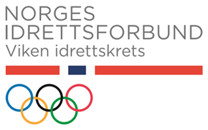Integration of
Ukrainian Refugee Children
Through Sport
Integration of Ukrainian Refugee Children Through Sport supports the integration of Ukrainian refugee children through sport by collecting and developing scalable, targeted, hands-on resources, piloting testing them in Poland, Romania, Denmark, Finland, Iceland and Norway.
Resources
Good Practice Collection – Tools and Activities
Our Integration of Ukrainian Refugees Through Sport good practice collection has been compiled with expert input from grassroots sport professionals, humanitarian organisations, coordinators from asylum centres and refugees themselves. It showcases available tools, activities and methodologies for engaging Ukrainian refugees in sport and play.
Methodological Guide
This methodological guide has been developed to provide teachers and trainers with practical suggestions and activities that utilise play and movement to promote the integration of Ukrainian children. It is designed to be utilised in both formal and non-formal childhood spaces, such as schools, gyms, social centres, and sports facilities, which are pivotal in promoting activities for minors at risk of social exclusion. By employing the strategies and approaches outlined in this guide, we aim to create inclusive and empowering environments where Ukrainian refugee children can thrive, build connections, and develop the necessary skills to navigate their new lives. We hope that this guide will serve as a valuable resource for educators and facilitators, enabling them to make a positive impact on the lives of refugee students and contribute to a more inclusive society.
Physical Education Materials
Physical Education Materials is the companion document of the Methodological Guide and offers an integrated vision to promoting the inclusion of refugee children. Through a combination of theoretical and practical approaches, the material provides tools, activities and suggestions for teachers, coaches and educators in order to create a safe, inclusive and human rights-friendly environment. It promotes the empowerment of children and encourages them to actively stand up for their rights, develop their social and communication skills, embrace cultural diversity, and work together towards common goals. Educators, in their role as facilitators, are encouraged to be flexible in their use of the materials. They should adapt them to the specific needs of Ukrainian refugee children. The ultimate goal of the Physical Educational Materials is to provide practical and concrete support in addressing the challenges of integrating refugee children and will be a valuable and inspiring resource for your work. You can find it here in English, Polish, Romanian and Ukrainian languages.
Educational videos
These videos have been created to support the integration of Ukrainian children in schools. The two contexts are different; in the case of Poland, a few videos are in Polish, as many Ukrainian children are already fluent in the Polish language. In Romania, Norway, Finland, Iceland and Denmark, where the children haven’t learned to speak the local language sufficiently yet, English has been chosen for all students, both local.

"Project is funded by the European Union. Views and opinions expressed are however those of the author(s) only and do not necessarily reflect those of the European Union or the European Education and Culture Executive Agency (EACEA). Neither the European Union nor EACEA can be held responsible for them."












